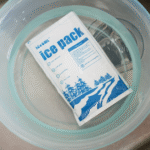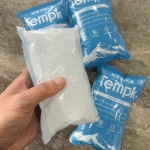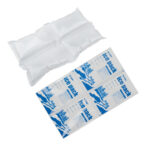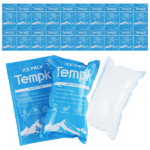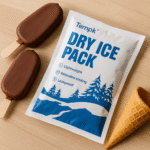نظام سلسلة التبريد للقاحات: كيف يعمل & لماذا يهم?
ال vaccine cold chain system is the foundation of modern immunization programmes. It is the network of people, equipment and procedures that keep vaccines within safe temperature limits from manufacturing to injection. Without a robust vaccine cold chain system, vaccines quickly lose potency – studies show that vaccines exposed to temperatures above 8 °C can lose up to 20 % of their effectiveness in just one hour. This guide explains how the vaccine cold chain system works, the recommended temperature ranges, monitoring technology and emerging trends so you can protect every dose.
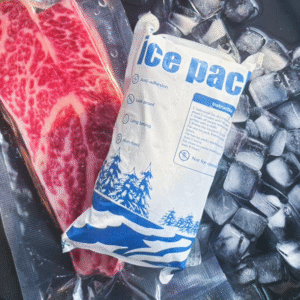
What the vaccine cold chain system is and why it matters – including the key elements (personnel, equipment and procedures).
Safe temperature ranges for vaccines and their categories – refrigerated, frozen and ultra cold vaccines and the consequences of temperature excursions.
Critical equipment for storage and transport – refrigerators, المجمدات, digital data loggers and insulated containers.
Best practices for monitoring and standard operating procedures – how to use digital data loggers, record temperatures and train staff..
Transportation methods and packaging choices – gel packs, الثلج الجاف, liquid nitrogen and IoT enabled logistics.
Innovations and market trends for 2025 – blockchain, solar powered storage, AI route optimisation and the growth of the global vaccine cold chain logistics market.
What Is a Vaccine Cold Chain System and Why Is It Essential?
A vaccine cold chain system ensures that vaccines stay within their prescribed temperature range throughout their journey. It comprises trained personnel, purpose built equipment and standard operating procedures. Without these components working together, vaccines may be exposed to damaging heat or cold, leading to lost potency, wasted doses and outbreaks of preventable diseases. في الحقيقة, research suggests that as many as 35 % of vaccines are compromised because of temperature mishandling, resulting in costly revaccination campaigns and reduced public confidence.
Why Temperature Control Protects Potency
Vaccines are biological products. Heat can degrade proteins and fats; freezing can cause ice crystals that damage their structure. Most routine vaccines require refrigeration between 2 درجة مئوية و 8 درجة مئوية. Live attenuated vaccines such as varicella and some COVID 19 formulations require freezing between –50 °C and –15 °C, بينما mRNA vaccines often need ultra cold storage between –90 °C and –60 °C. Exposure to temperatures above 8 °C for just one hour may reduce potency by 20 %. على العكس من ذلك, freezing aluminium containing vaccines causes clumping and irreversible damage. Maintaining the right range is therefore critical for efficacy.
Key Elements of the Vaccine Cold Chain System
ال three key elements of the vaccine cold chain system are personnel, equipment and procedures:
Personnel – a trained vaccine and cold chain handler manages storage, monitors temperatures and maintains records. At each facility there should be a designated coordinator responsible for training staff, ordering inventory and implementing emergency plans.
معدات – purpose built refrigerators, المجمدات, ice lined refrigerators (ILRs), صناديق باردة, data loggers and transport vehicles ensure vaccines remain in range. Equipment can be electrical (powered by mains or solar) or non electrical (ice packs and vaccine carriers).
إجراءات – standard operating procedures (SOPS) outline how to load units, arrange vaccines by expiry date, record temperatures and respond to excursions. Without clear procedures, equipment and people cannot prevent temperature damage.
A strong vaccine cold chain system protects the potency of vaccines, reduces waste and builds public trust.
How the Vaccine Cold Chain System Works Across the Supply Chain
The vaccine cold chain system begins at the manufacturing plant and continues through national and local storage facilities to the clinic. At each link, temperatures must be maintained and documented. بحسب منظمة الصحة العالمية, vaccines travel from the manufacturer to primary stores, district stores and clinics via refrigerated or insulated vehicles, cold boxes and vaccine carriers. These transport stages use controlled ranges such as +2 درجة مئوية إلى +8 °C for refrigerated vaccines and –15 °C to –25 °C for frozen vaccines. Each store uses equipment like walk in coolers (WICs), walk in freezers (WIFs), ice lined refrigerators and deep freezers to keep doses safe.
Manufacturing – Vaccines are produced under strict conditions and immediately cooled. They are packaged in vials or syringes and placed in shipping containers with data loggers and refrigerants. Manufacturers must coordinate with logistics providers to prepare for specific temperature needs.
Primary and district storage – Walk in coolers and walk in freezers receive bulk shipments. Staff monitor temperatures at least twice daily and ensure stock rotation using the “first expiring, first out” method.
مواصلات – Insulated vans, refrigerated trucks or passive cold boxes move vaccines to regional or local facilities. Data loggers travel with shipments, recording temperatures at least every 30 دقائق.
Local storage and administration – Clinics use ice lined refrigerators or small freezers to store vaccines until administration. Vaccine carriers maintain the correct temperature during outreach sessions. Staff check min/max temperatures each workday and update logs.
By maintaining the cold chain from start to finish, the vaccine cold chain system ensures that each dose delivers its intended protection.
Safe Temperature Ranges and Vaccine Categories
Different vaccines require different storage conditions. Knowing the required temperature range for each vaccine type is essential for the vaccine cold chain system. The following categories summarise the main requirements:
| Vaccine Category | نطاق درجة الحرارة | Example Vaccines | دلالة |
| مبردة | 2 درجة مئوية – 8 درجة مئوية (36 °F – 46 ° f) | Influenza, DTaP, فيروس الورم الحليمي البشري, MMR and most routine vaccines | The most common range. Maintaining around 5 °C reduces fluctuations. |
| المجمدة | –50 درجة مئوية – –15 درجة مئوية (–58 °F – 5 ° f) | Varicella, mpox (Jynneos) and some COVID 19 vaccines | Required for live attenuated vaccines; exposure to warmer temperatures compromises viral components. |
| بارد جدا | –90 درجة مئوية – –60 درجة مئوية (–130 °F – –76 °F) | mRNA vaccines like Pfizer–BioNTech Comirnaty | Necessary for long term storage. Some vials can be thawed and stored at 2 °C–8 °C for up to ten weeks. |
Most vaccines used today fall into the refrigerated category and must never be frozen. Freezing aluminium adjuvanted vaccines causes clumping and irreversible damage. على العكس من ذلك, some formulations (على سبيل المثال, لقاحات مرنا) lose potency quickly if allowed to thaw and must be kept in ultra cold freezers or moved to refrigerated storage just before use.
Consequences of Temperature Excursions
Even brief deviations outside the prescribed range can have serious consequences. A one hour exposure above 8 °C can reduce vaccine effectiveness by up to 20 %. Frozen vaccines thawed accidentally must be discarded, and ultra cold vaccines that warm above –60 °C cannot be returned to storage. Because potency cannot be restored, the vaccine cold chain system prioritises prevention through accurate temperature control and monitoring.
Essential Equipment for the Vaccine Cold Chain System
Purpose built equipment is the backbone of the vaccine cold chain system. Household refrigerators are not adequate because they have wide temperature fluctuations and uneven cooling. The following equipment categories keep vaccines within range:
Pharmaceutical grade refrigerators and freezers – These units maintain stable temperatures within the recommended range and include features like alarms, lockable doors and shelves that allow airflow. Ice lined refrigerators (ILRs) store vaccines at +2 درجة مئوية إلى +8 °C and have a holdover time of 20 ساعات في 43 درجة مئوية, meaning they maintain temperature during power cuts. Deep freezers maintain –15 °C to –25 °C and store ice packs or vaccines requiring freezing.
ثلاجات فائقة البرودة – Designed for mRNA vaccines, these units maintain –90 °C to –60 °C. They often require backup power and have smaller capacity due to insulation thickness.
Cold boxes and vaccine carriers – Passive containers lined with insulation and filled with conditioned ice packs or phase change materials (PCMS). They are used for transport or outreach sessions and can maintain +2 درجة مئوية إلى +8 درجة مئوية لمدة تصل إلى 96 hours in hot conditions.
Insulated vans and refrigerated vehicles – Vehicles equipped with refrigeration units to transport vaccines between hubs. They are used for both refrigerated (+2 درجة مئوية إلى +8 درجة مئوية) وتجميد (–15 °C to –25 °C) منتجات.
Solar powered refrigerators – Ideal for remote areas without reliable electricity. They use solar panels and batteries to maintain vaccine temperatures. Solar cold storage reduces energy costs; commercial electricity averaged 13.10 cents per kilowatt hour in 2024, whereas solar rates ranged from 3.2 ل 15.5 سنتا لكل كيلوواط ساعة.
Avoiding Inadequate Equipment
Use of combination household refrigerators or dorm style fridges is discouraged. They often experience temperature fluctuations and have freezer compartments that can accidentally freeze vaccines. When pharmaceutical grade units are unavailable, a standalone refrigerator may be used temporarily but requires careful monitoring. Always place vaccines in their original boxes away from walls and doors, and never store food or beverages in the same unit.
Monitoring Temperature: Digital Data Loggers and Best Practices
Continuous temperature monitoring is the heart of the vaccine cold chain system. الولايات المتحدة. مراكز السيطرة على الأمراض والوقاية منها (CDC) recommends using digital data loggers (DDLs), which record temperatures at preset intervals and provide detailed histories. Unlike simple thermometers, DDLs capture trends and alert staff before vaccines are compromised.
Features of an Effective Digital Data Logger
A reliable DDL should include:
| ميزة | لماذا يهم | فائدة |
| Buffered probe | Measures liquid temperature rather than air, mimicking vaccine conditions | Prevents false alarms when doors open and reduces unnecessary transfers |
| Out of range alarm | Alerts staff immediately when temperatures deviate | Enables rapid corrective action, توفير اللقاحات |
| Programmable logging interval | Allows recording at least every 30 دقائق | Provides detailed temperature history for audits |
| Calibration and accuracy | Uncertainty of ±0.5 °C and periodic calibration ensure reliable readings | Ensures compliance and protects vaccine potency |
| Cloud connectivity and remote access | Sends real time data and alerts to remote devices | Enhances oversight and facilitates rapid response |
The CDC recommends that every storage and transport unit have a DDL and that at least one backup device be available. Staff should download and review DDL data at least every two weeks and keep records for three years. Calibration certificates should indicate the model, رقم سري, date of calibration, and uncertainty.
Standard Operating Procedures and Training
Monitoring alone is insufficient without clear procedures and trained staff. Each facility should develop standard operating procedures covering storage, التعامل, يراقب, الاستجابة لحالات الطوارئ والتوثيق. Key practices include:
Recording minimum and maximum temperatures at the start of each workday; if DDLs display min/max readings, staff still record them daily.
Training all personnel who handle vaccines, with orientation and annual refresher courses. Scenario based drills prepare teams for power outages, equipment failure and natural disasters.
Creating an emergency plan outlining backup power sources, alternative storage locations and contact information.
Document retention – maintain temperature logs and calibration certificates for at least three years.
A robust SOP ensures that the vaccine cold chain system functions smoothly even during unexpected events.
Transport and Packaging: Protecting Vaccines on the Move
Maintaining temperatures during transport is just as important as during storage. The vaccine cold chain system uses various packaging methods and refrigerants depending on the required temperature range. وفقا لأبحاث السوق, the global vaccine cold chain logistics market was valued at دولار أمريكي 3.5 مليار في 2024 and is predicted to reach USD 5.9 مليار من قبل 2034 مع معدل نمو سنوي مركب قدره 5.3 %. Growth is driven by increased vaccine production, advances in packaging technologies and growing awareness of health and wellness.
Packaging Methods and Refrigerants
الجليد الجاف (ثاني أكسيد الكربون الصلب) – provides temperatures around –78 °C and is suited for frozen or ultra cold shipments. It sublimates rather than melts, but shipping regulations limit the amount that can be used.
Gel packs and phase change materials (PCMS) – maintain 2 °C–8 °C for refrigerated vaccines. تمتص أجهزة PCM الحرارة أو تطلقها عند درجات حرارة محددة, extending hold times.
النيتروجين السائل – enables cryogenic conditions below –150 °C for cell and gene therapies.
Use validated containers and pack out designs that match the expected ambient conditions and transit time. Always include a calibrated DDL inside shipments and select shipping routes that minimize transit time and handling.
IoT Enabled Sensors and AI Driven Logistics
Modern cold chain logistics increasingly rely on smart sensors that transmit real time temperature, الرطوبة وبيانات الموقع. عندما تكتشف أجهزة الاستشعار درجات حرارة غير آمنة, they automatically alert users via text, email or mobile app. Integrating sensors with GPS provides visibility across the supply chain and allows rapid intervention. الذكاء الاصطناعي (منظمة العفو الدولية) algorithms analyze traffic and weather data to optimise routes and reduce transit time. Predictive analytics identify patterns and trigger alerts before excursions occur, making the vaccine cold chain system more resilient.
Innovations Shaping the Vaccine Cold Chain System in 2025
The vaccine cold chain system is evolving rapidly. Technologies emerging in 2025 enhance transparency, الاستدامة والكفاءة, helping to meet the growing demand for vaccines and comply with stricter regulations. highlights several key innovations:
Blockchain لإمكانية التتبع من النهاية إلى النهاية – Distributed ledger technology records every transaction in the supply chain, creating a tamper proof log of temperature, location and handover events. This transparency facilitates audits and reduces the risk of data manipulation.
غرفة تبريد تعمل بالطاقة الشمسية – Off grid solar units provide reliable refrigeration in areas with unstable electricity. Solar cold storage reduces operational costs; في 2024 commercial electricity averaged 13.10 ¢/kWh while solar rates ranged from 3.2 ل 15.5 ¢/kWh.
تمكين أجهزة الاستشعار الذكية من إنترنت الأشياء – Wireless sensors deliver real time data and alerts, reducing operational risk. Coupled with GPS, they allow complete visibility from origin to destination.
تحسين المسار المدعوم بالذكاء الاصطناعي – AI analyses traffic and weather patterns to choose routes that maintain temperature stability and reduce transit time.
المجمدات المبردة المحمولة – Compact units maintain –80 °C to –150 °C, enabling safe transport of cell and gene therapies and ultra cold vaccines.
التغليف المستدام – Recyclable containers, biodegradable thermal wraps and reusable cold packs reduce environmental impact while maintaining temperature.
These innovations not only enhance performance but also align the vaccine cold chain system with corporate environmental, الاجتماعية والحوكمة (ESG) commitments.
Market Insights and Growth Drivers
The cold chain sector supports both food and pharmaceutical industries, but vaccines represent a high stakes segment. The global cold chain market is expected to grow from USD 418.81 مليار في 2025 إلى USD 1,416.67 مليار من قبل 2034, تمثيل أ 14.5 % معدل النمو السنوي المركب (CAGR). North America holds about 36 % of revenue and continues to invest in energy efficient technologies. في نفس الوقت, the dedicated vaccine cold chain logistics market will expand from دولار أمريكي 3.5 مليار في 2024 إلى USD 5.9 مليار من قبل 2034.
Drivers of growth include:
Surging vaccine production – The ongoing rollout of mRNA boosters and cell therapies necessitates more cold chain capacity.
الابتكارات التكنولوجية – أجهزة استشعار إنترنت الأشياء, blockchain and AI improve efficiency and reduce waste.
Expanding healthcare access – Rural immunisation programmes and global disease eradication initiatives require reliable cold storage in remote areas.
الامتثال التنظيمي – Stricter guidelines for temperature monitoring, documentation and security compel facilities to upgrade equipment and systems.
التركيز على الاستدامة – Governments and companies prioritise renewable energy and recyclable materials in cold chain operations.
Understanding these trends helps organisations anticipate future needs and plan investments accordingly.
2025 أحدث التطورات والاتجاهات
2025 brings new developments that reshape the vaccine cold chain system:
Connected cold chains become the norm – Integration of IoT sensors, AI and blockchain fosters end to end visibility and proactive intervention. Facilities can monitor shipments in real time and quickly respond to excursions.
Stricter compliance and auditing – Regulatory bodies such as the CDC, WHO and EU GDP require continuous temperature monitoring, detailed record keeping and regular calibration.
Rising demand for ultra cold storage – The popularity of mRNA boosters and biologics drives investment in cryogenic freezers and specialized packaging.
Sustainability integration – Companies adopt solar powered units and recyclable packaging to reduce energy consumption and waste.
Digital vaccine supply chain (DVSC) – Modern information technology tracks and manages vaccine processes in real time, enhancing transparency and efficiency. The World Health Organization’s Global Strategy on Digital Health (2020-2025) encourages countries to leverage digital technologies to improve vaccine supply chain management.
By embracing these trends, organisations can future proof their vaccine cold chain systems.
الأسئلة المتداولة
س 1: How long can mRNA vaccines be stored at refrigerator temperatures?
بعد الذوبان, some mRNA vaccines such as Pfizer–BioNTech Comirnaty may be kept at 2 °C–8 °C for up to ten weeks. Always refer to the manufacturer’s product insert and monitor temperatures continuously.
Q2: What should I do if a vaccine is exposed to temperatures above 8 درجة مئوية?
Any temperature excursion may degrade potency. Immediately quarantine the affected vaccines, label them “do not use,” and contact the manufacturer or immunisation programme for guidance. Studies show that a one hour exposure above 8 °C may reduce vaccine effectiveness by up to 20 %. Never administer compromised doses.
س 3: Can I use a household refrigerator to store vaccines?
Household refrigerators may be used only if pharmaceutical grade units are unavailable. Combination units and dorm style fridges are not acceptable; they have uneven temperatures and can freeze vaccines. If a household refrigerator is used, place vaccines in the centre, away from walls and the door, and monitor temperatures closely.
س 4: How often should I record temperatures?
The CDC recommends checking and documenting minimum and maximum temperatures at least twice daily and downloading data from digital loggers every two weeks or after any excursion. If your logger displays min/max readings, record them at the start of each workday.
س 5: What should an emergency cold chain plan include?
A robust plan should cover backup power sources, alternative storage locations, transport containers and emergency contact information. Conduct regular drills and ensure all staff know the steps to transfer vaccines safely during power outages or equipment failure.
ملخص وتوصيات
في 2025 the vaccine cold chain system is more critical than ever. Keeping vaccines potent requires strict adherence to temperature ranges (2 °C–8 °C for most vaccines, –50 °C– –15 °C for live attenuated vaccines and –90 °C– –60 °C for mRNA formulations). استخدم الثلاجات الصيدلانية, freezers and ultra cold units; avoid household combination refrigerators and overcrowding. ينفذ calibrated digital data loggers with buffered probes, alarms and cloud connectivity to monitor temperatures continuously. Develop standard operating procedures, train staff regularly, and prepare for emergencies. يعتنق innovations like IoT sensors, تحسين مسار الذكاء الاصطناعي, blockchain traceability and solar powered storage to enhance efficiency and sustainability. أخيراً, البقاء على اطلاع حول اتجاهات السوق, regulatory changes and new technologies to future proof your vaccine cold chain system.
خطة العمل: Next Steps for Optimising Your Vaccine Cold Chain System
Audit your equipment – Assess your current refrigerators, freezers and data loggers. Replace any combination or dorm style units with pharmaceutical grade models. Verify calibration certificates and plan replacements for units approaching the end of their service life.
Implement or upgrade digital monitoring – Invest in high precision digital data loggers with glycol buffered probes, out of range alarms and cloud connectivity. Ensure the logging interval is at least every 30 minutes and keep backup devices.
Develop comprehensive SOPs and training programmes – Create written procedures covering storage, ينقل, الرصد والاستجابة لحالات الطوارئ. Train all staff upon hire and provide annual refresher courses. Conduct regular drills to test the emergency plan.
Explore innovations and sustainability – Evaluate the feasibility of solar powered refrigerators for off grid sites and مستشعرات إنترنت الأشياء for real time monitoring. Consider sustainable packaging options like reusable containers and biodegradable thermal wraps.
Monitor market and regulatory updates – Stay informed about evolving guidelines from the CDC, WHO and national authorities. Monitor market trends such as the growth of the vaccine cold chain logistics market and emerging technologies.
By following this action plan you can strengthen your vaccine cold chain system, reduce waste and ensure that every dose administered delivers full immunity.
حول Tempk
Tempk is a leading innovator in cold chain solutions for healthcare and life sciences. We design and manufacture pharmaceutical grade refrigerators, المجمدات, insulated containers and state of the art temperature monitoring systems. Our products feature advanced insulation, digital data loggers with cloud connectivity and options for solar power integration, enabling reliable storage in remote locations. We are committed to sustainability and offer reusable packaging and biodegradable thermal wraps to reduce environmental impact. مع R مخصص&D team and strict quality standards, we help you safeguard vaccines and support regulatory compliance.
Ready to optimise your vaccine cold chain system? اتصل بأخصائياتنا today for a customised assessment and discover how Tempk can help you maintain potency, reduce waste and embrace the innovations of 2025.

















